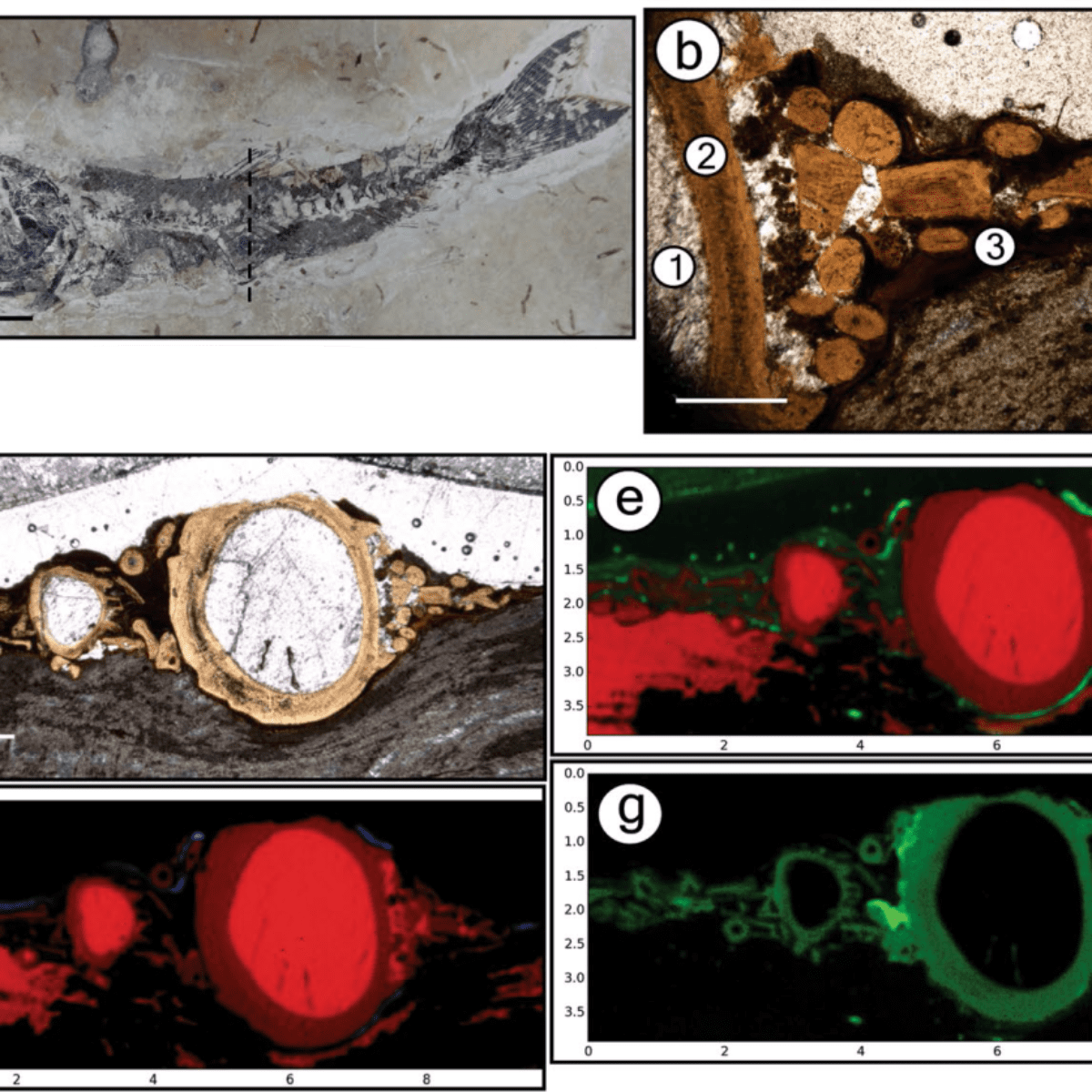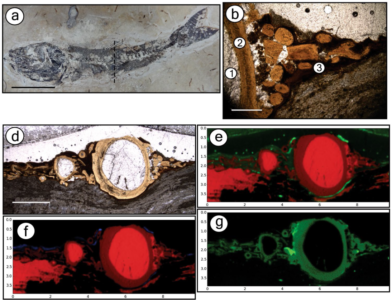
Researchers investigate the preservation of soft tissues during fossilization
Everything we know about the organisms that lived thousands of years ago comes from the fossils they left behind. The formation of fossils is an extremely rare phenomenon. It depends on the burial of the organism, the chemical processes responsible for its conservation and the non-destruction of the resulting fossil by later geological processes.
The chemical processes of fossilization must occur rapidly, before the total decomposition of the tissues by microorganisms. In the vast majority of cases, only hard tissues, such as bones and shells, are preserved. Soft tissues, like muscles, are easily decomposed and, hence, rarely preserved in fossils. However, when preserved, they are a great source of information on the evolution of organisms and the ecological context in which they were.
A multidisciplinary group of researchers from Brazilian universities and from the Brazilian Synchrotron Light Laboratory (LNLS) used the facilities of the LNLS and of the Brazilian National Nanotechnology Laboratory (LNNano) to investigate the mechanisms behind the formation of fossils with particularly well preserved soft parts.
The fossils investigated are of the species Dastilbe crandalli, from the Cretaceous period (between 145 and 66 million years ago), extracted from the Santana Formation, in the Araripe Basin, in the Brazilian state of Ceará.

Figure 1: (a) Fossil preserved in gray limestone (scale 1.5 cm). (B) Cross section of the fossil showing calcite (1), vertebrae (2) and soft tissues (3) (0.5 mm scale). (D) Region highlighted for X-ray fluorescence analysis. (2 mm scale) (e – g) Maps of several elements distributed in the highlighted region respectively, Calcium (red) and Iron (green), Calcium (red) and Copper (blue), and Zinc.
The specimens were found preserved in two types of limestone, beige and gray, differentiated by the amount of organic matter present. Using a variety of analysis techniques that included Scanning Electron Microscopy (made in LNNano) and X-Ray Fluorescence Spectroscopy (performed in the LNLS XRF Beamline), the researchers could observe that the samples underwent different processes of fossilization.
In the fossils formed in the beige limestone, the soft tissues were preserved by the deposition of the mineral pyrite ($ \rm Fe S_2 $). In the case of gray limestone, the tissues were fossilized by the formation of kerogen, a stable chemical form of carbon formed from the insoluble part of organic matter subjected to high pressures. Both processes occur through the anaerobic respiration of bacteria that act on the decay of the carcass. Slow sedimentation leads to pyritization of soft tissues, while higher sedimentation rates favor the formation of fossils by kerogenization, since these processes occur in different depths of the sediment.
The researchers were also able to verify that the quality of fossil preservation was higher in those formed by the pyritization process and, according to the corresponding researcher, Gabriel Osés, this is the first record of soft tissues of vertebrates preserved by this process.
Source: Gabriel L. Osés, Setembrino Petri, Cibele G. Voltani, Gustavo M. E. M. Prado, Douglas Galante, Marcia A. Rizzutto, Isaac D. Rudnitzki, Evandro P. da Silva, Fabio Rodrigues, Elidiane C. Rangel, Paula A. Sucerquia & Mírian L. A. F. Pacheco, Deciphering pyritization-kerogenization gradient for fish soft-tissue preservation. Scientific Reports 7, 1468 (2017), doi:10.1038/s41598-017-01563-0.
Reaction is an important step in the transformation of carbon dioxide into fuels
Study shows the validity of mini-brains as a model for embryonic neurodevelopment.